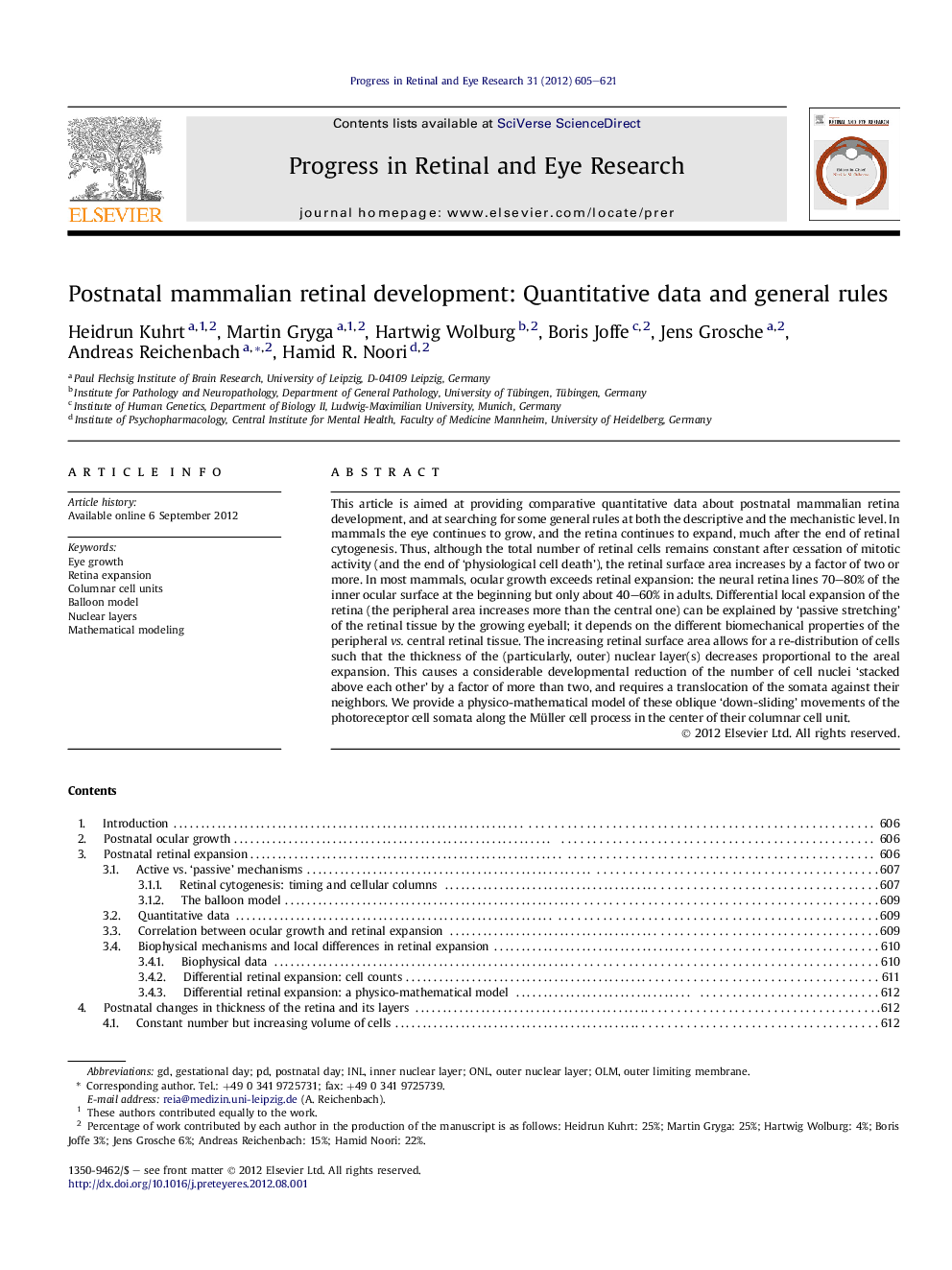| Article ID | Journal | Published Year | Pages | File Type |
|---|---|---|---|---|
| 4031999 | Progress in Retinal and Eye Research | 2012 | 17 Pages |
This article is aimed at providing comparative quantitative data about postnatal mammalian retina development, and at searching for some general rules at both the descriptive and the mechanistic level. In mammals the eye continues to grow, and the retina continues to expand, much after the end of retinal cytogenesis. Thus, although the total number of retinal cells remains constant after cessation of mitotic activity (and the end of ‘physiological cell death’), the retinal surface area increases by a factor of two or more. In most mammals, ocular growth exceeds retinal expansion: the neural retina lines 70–80% of the inner ocular surface at the beginning but only about 40–60% in adults. Differential local expansion of the retina (the peripheral area increases more than the central one) can be explained by ‘passive stretching’ of the retinal tissue by the growing eyeball; it depends on the different biomechanical properties of the peripheral vs. central retinal tissue. The increasing retinal surface area allows for a re-distribution of cells such that the thickness of the (particularly, outer) nuclear layer(s) decreases proportional to the areal expansion. This causes a considerable developmental reduction of the number of cell nuclei ‘stacked above each other’ by a factor of more than two, and requires a translocation of the somata against their neighbors. We provide a physico-mathematical model of these oblique ‘down-sliding’ movements of the photoreceptor cell somata along the Müller cell process in the center of their columnar cell unit.
